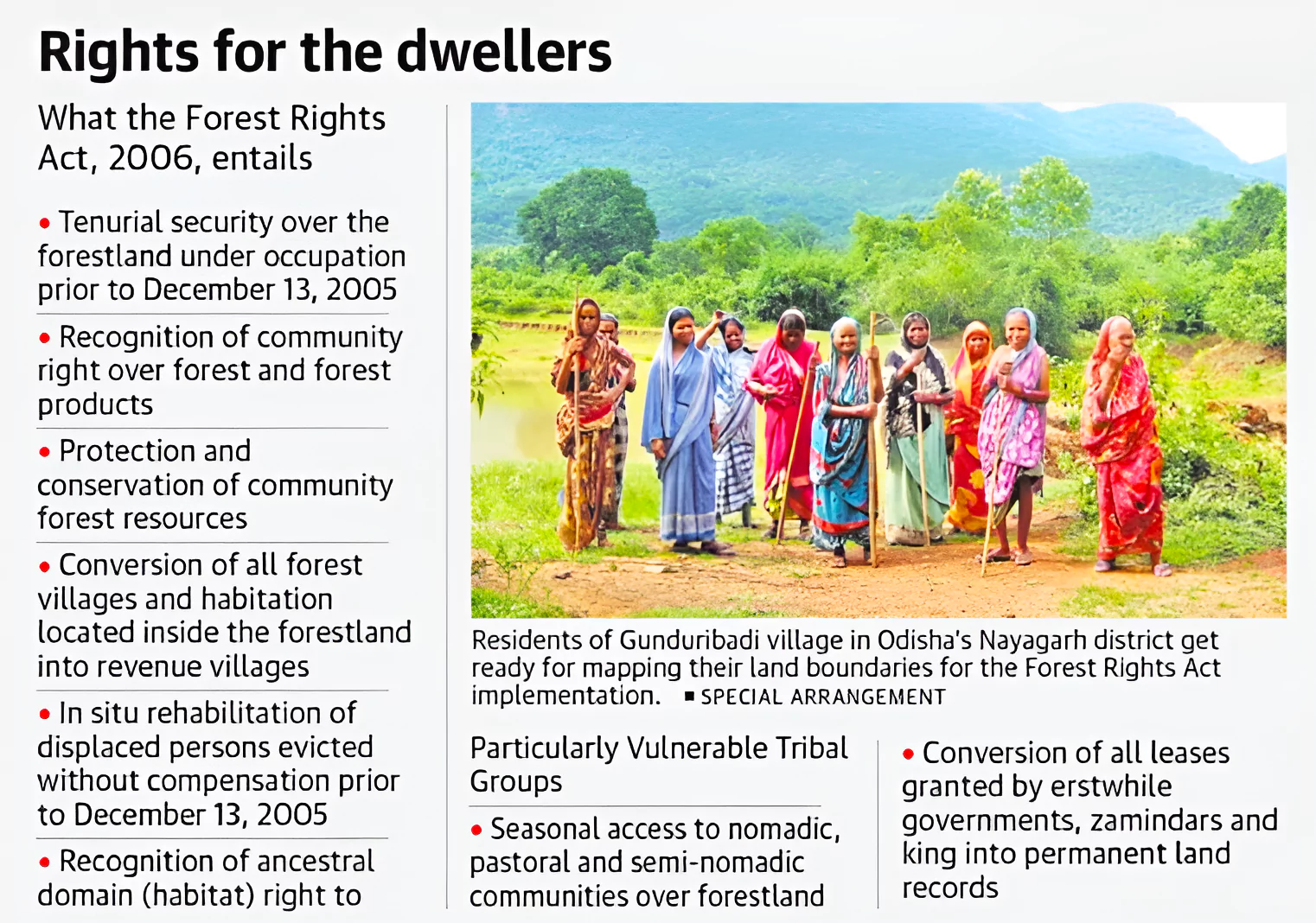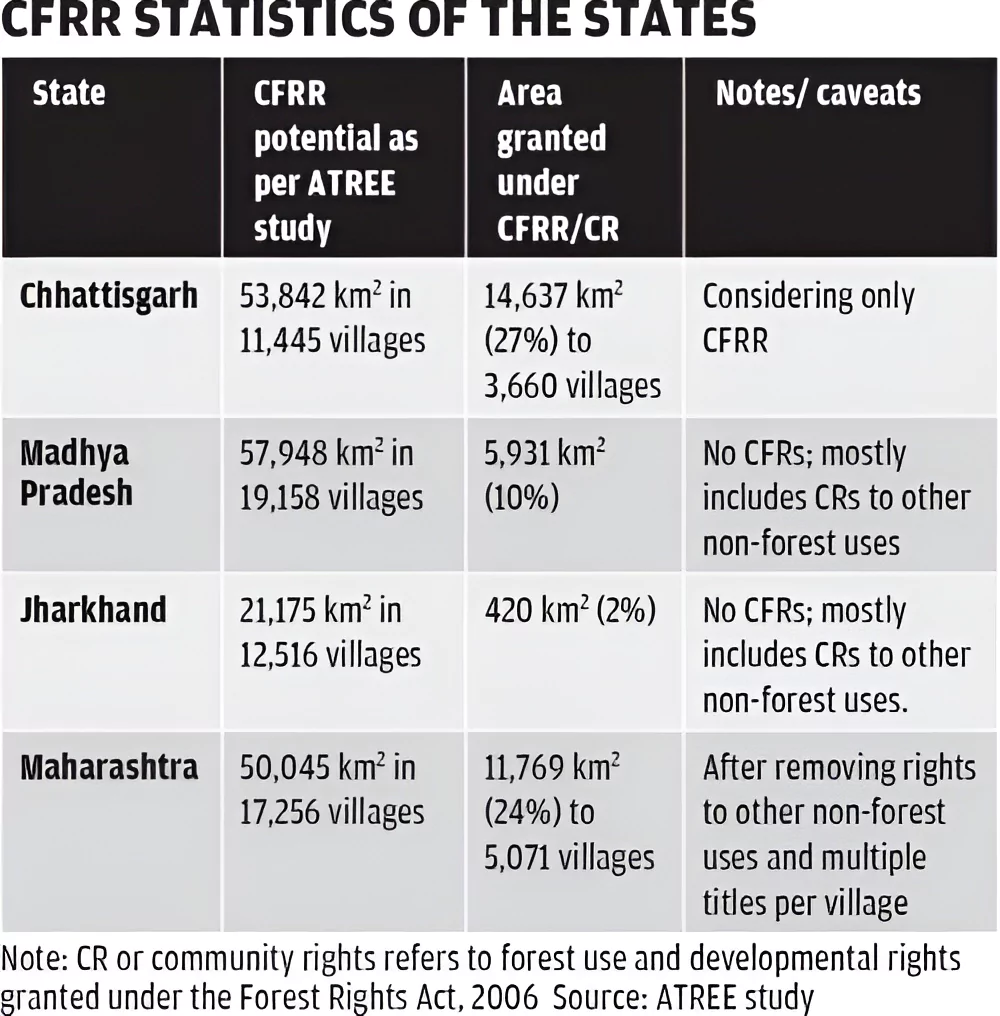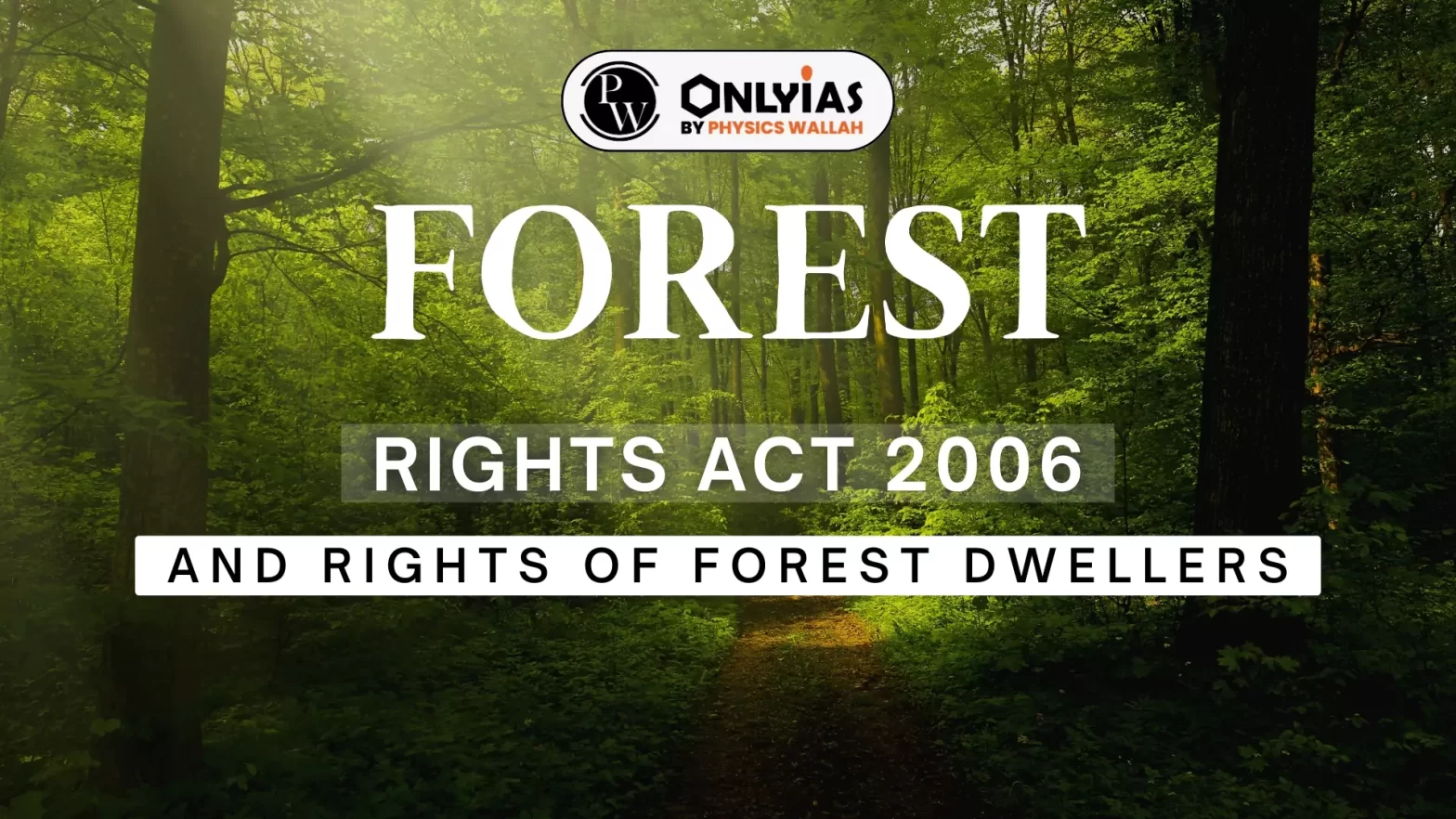Context:
This article is based on the news “T.N. gets its 18th wildlife sanctuary in the reserve forests of Erode district” which was published in the Hindu. The Tamil Nadu government has declared 80,114.80 hectares of reserve forests in Bargur Hills in Erode district, as the Thanthai Periyar Wildlife Sanctuary.
Thanthai Periyar Wildlife Sanctuary: Tamil Nadu’s 18th Wildlife Sanctuary
Strategic Ecological Linkage: The sanctuary links the Nilgiris Biosphere Reserve with Cauvery South Wildlife Sanctuary, and has been notified as the 18th wildlife sanctuary in the State.
-
- Declaring the reserve forests as wildlife sanctuary would create a contiguous network of protected areas, thereby providing protection to the landscape.
- Potential Rights Infringement: The move has raised concern among the local forest-dwelling communities regarding an infringement upon their rights as outlined under Scheduled Tribes and Other Traditional Forest Dwellers (Recognition of Forest Rights Act 2006).
- Exclusion of Habitats: Six tribal habitations and roads connecting these habitations have been excluded from the habitat.
- However, tribal associations and residents of this region are opposing the move as their traditional rights will be curtailed once these forests become protected reserves.
Thanthai Periyar Wildlife Sanctuary
- Location: Between the Sathyamangalam Tiger Reserve of Tamil Nadu and the Male Mahadeshwara Wildlife Sanctuary and the Cauvery Wildlife Sanctuary of Karnataka.
- Fauna: The region is part of the Nilgiris Elephant Reserve and is home to a viable tiger population as well as herbivores like elephants and gaur.
- It is one of the tiger corridors identified by the National Tiger Conservation Authority.
- Rivers: It is the catchment of the Palar River that drains into the Cauvery River.
- Cultural and Historical Significance: Tribal and local communities depend on these ecosystems for their livelihoods and traditional practices.
|
About Forest Rights Act 2006
- Genesis: The Scheduled Tribes and Other Traditional Forest Dwellers (Recognition of Forest Rights Act 2006) was passed on December 18, 2006. The act was notified into force on December 31, 2007.
- About: Forest Rights Act 2006 recognizes the rights of the forest dwelling Scheduled Tribes tribal (FDST) and other traditional forest dwellers (OTFD) to claim legal rights over the forest land they have occupied for generations.
Rights Provided Under Forest Rights Act 2006
- Title Rights: The Forest Rights Act 2006 gives FDST and OTFD the right to ownership of land that is actually being cultivated by the tribals or forest dwellers subject to a maximum of 4 hectares.
| Minor Forest Produce (MFP) is all non-timber forest produce of plant origin and includes bamboo, brushwood, stumps, canes, etc. |
- Use Rights: Forest Rights Act 2006 also grants use rights over minor forest produce, including the ownership, to grazing areas, to pastoralist routes, etc.
- Individual Forest Rights (IFR): Forest Rights Act 2006 gives access to land for farming up to four hectares. The individual has the right to use the land for agriculture and other livelihood purposes, securing their food and livelihood.
| A community forest resource (CFR) means the “customary common forest land within the traditional or customary boundaries of the village or seasonal use of landscape in the case of pastoral communities … to which the community had traditional access”. |
- Community Forest Resource (CFR) Rights: Forest Rights Act 2006 provides for recognition of the right to “protect, regenerate or conserve or manage” the community forest resource.
- Relief and Development Rights: These include the right to rehabilitation in case of illegal eviction or forced displacement and to basic amenities, subject to restrictions for forest protection.
 Forest Management Rights: These are granted in order to protect forests and wildlife.
Forest Management Rights: These are granted in order to protect forests and wildlife.
Key Provisions Of Forest Rights Act 2006
- Empowering Gram Sabhas: It gives gram sabhas, or village councils, the right to decide on how best their forest land can be used.
- Grazing rights are community rights of the habitation-level villages and are to be regulated by their gram sabhas. Any transfer of forest land for non-forestry use requires their consent.
- Claiming Title to Land: The Forest Rights Act 2006 lays down criteria under which tribal inhabitants can claim title to their land.
- The title given under the Forest Rights Act 2006 is a legal title and is a formal recognition of the forest right.
-
- To qualify as FDST, the following conditions must be satisfied:
- Must be a Scheduled Tribe in the area where the right is claimed
- Primarily resided in the forest or forest land prior to 13-12-2005;
- Depend on the forest or forests land for bonafide livelihood needs
- To qualify as OTFD:
- Primarily resided in forest or forests land for three generations (75 years) prior to 13-12-2005
- Depend on the forest or forest land for bonafide livelihood needs
Concerns Associated With Forest Rights Act 2006
- Poor Recognition of CFR: There has been slow and incomplete recognition of CFR.
- The forest bureaucracy, still structured along colonial lines, strongly opposes these rights, fearing a loss of its authority.
- Other government departments and political representatives view forest-dwellers merely as beneficiaries of state assistance, rather than as independent users and managers of their own forests.
- Maharashtra, Odisha, and Chhattisgarh are the only States to recognise CFRs substantially.
- Only Maharashtra has enabled their activation by de-nationalising minor forest produce, at least in Scheduled Areas resulting in at least a thousand villages managing their own forests.
|
- Uncertainty in CFRR Eligibility: There is a lack of clarity regarding the specific locations and extent of forest land that may qualify for Community Forest Resource Rights (CFRR) claims.
- This results in the absence of defined targets set by state governments.
 Misuse of Forest Rights Act 2006: District-level committees disregard gram sabhas conducted for the purpose, often without adhering to the provision regarding extension of time limits for claim submission.
Misuse of Forest Rights Act 2006: District-level committees disregard gram sabhas conducted for the purpose, often without adhering to the provision regarding extension of time limits for claim submission. -
- Consequently, occupational or cultivation rights/titles (commonly referred to as patta) are being granted in favor of ineligible claimants who encroached upon forest land even after the cut-off date of 13.12.2005.
- This is a violation of Forest Rights Act 2006, as well as Forest Conservation Act, 1980, and Indian Forest Act, 1927.
- Unsustainable use of Forest Resources: Ineligible communities have been granted rights without specifying “extent” along with “nature” of the community rights.
- This has led to “uncontrolled extractions” posing a threat to the sustainability of forest resources, including minor forest produce.
- Ex- Forest Survey of India’s State of Forest Report 2021 indicates a loss of 10,594 sq. km of bamboo-bearing area compared to the area reported in 2019.
- Negligence by Government Authorities: The Collector is to inquire into the rights of all persons, their nature and extent, in the proposed Sanctuary or National Park.
Judiciary on Cattle Grazing:
- In March 2022, the Madras High Court imposed a total ban on cattle grazing in all the forests of Tamil Nadu and restricted the ban to National Parks, Sanctuaries, and Tiger Reserves.
- This order contravenes the Forest Rights Act 2006, which, aside from other community rights, recognised “grazing and traditional seasonal resource access of nomadic or pastoralist communities” in all forests, including in National Parks, Sanctuaries, and Tiger Reserves.
- Courts have overlooked these breaches, which have become deeply ingrained within the forest department since the colonial era, with the forest bureaucracy inheriting similar practices.
|
-
- Moreover, the Collector’s office needs to decide whether to accept claims within Sanctuaries and acquire all rights within National Parks.
- However, governments have failed to adhere to these procedures.
- Imposition of Absurd Digital Processes: Digital process implementation in areas with poor connectivity and literacy has hindered effective processing of claims. Ex-VanMitra software in Madhya Pradesh.
- Uneven Implementation of FRA across states: Andhra Pradesh has recognised 23% of 29,64,000 acres of its minimum potential forest claim, while Jharkhand, with 52,36,400 acres of minimum potential forest area, has recognised only 5%.
- Within states, some districts have performed better than others. For example, within Odisha, Nabarangapur district has a 100% IFR recognition rate, but in Sambalpur, it is at 41.34%.
Way Forward
- Enhanced Documentation and Evidence Presentation: Instructions should be provided to all states, directing forest field officials to present satellite images and other documentary evidence depicting the status of forest encroachment.
- This will ensure that claims are not solely admitted based on the evidence provided by village elders but are supplemented with additional evidence.
- Streamlining Gram Sabha Meetings: Gram sabha meetings should be stopped repeatedly for the purpose of conferring individual forest rights over forest lands in such habitations where exercise has been already completed after final decision of District Level Committee.
- Specifying Extent of Rights: Instructions must be given for all cases involving the grant of community forest rights to include the specification of the ‘extent’ of permitted produce.
- Sensitisation of State Government Agencies: The state government agencies such as the forest departments, tribal welfare departments and revenue departments must be sensitized to facilitate the recognition of CFRRs to ensure the participation of local communities in sustainable forest management.
- Capacity Building: Efforts should be made towards building capacity of frontline staff and the local community with respect to sustainable harvest of forest produce and forest development activities for improving the quality of forests.
Also Read: Habitat Rights Granted To Baiga Tribal Group
![]() 16 Feb 2024
16 Feb 2024

 Forest Management Rights: These are granted in order to protect forests and wildlife.
Forest Management Rights: These are granted in order to protect forests and wildlife. Misuse of Forest Rights Act 2006: District-level committees disregard gram sabhas conducted for the purpose, often without adhering to the provision regarding extension of time limits for claim submission.
Misuse of Forest Rights Act 2006: District-level committees disregard gram sabhas conducted for the purpose, often without adhering to the provision regarding extension of time limits for claim submission.